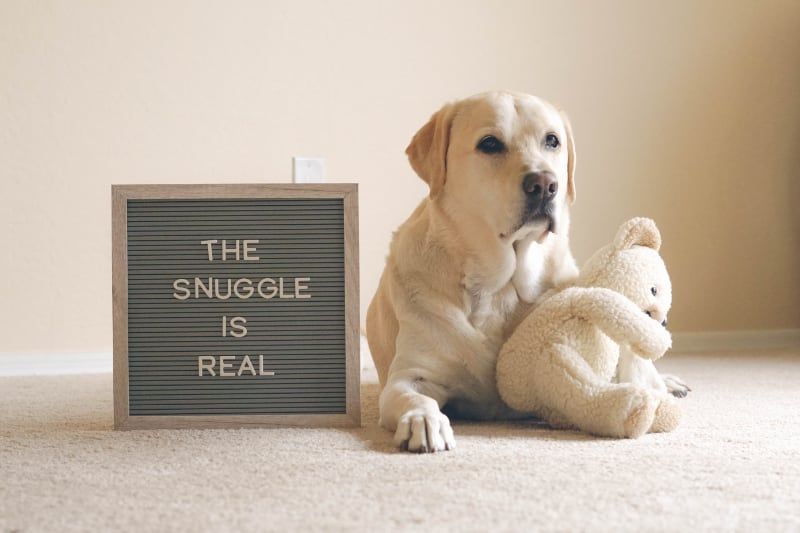
As much as we would like to think that everything in business runs smoothly, the truth is that things can and do go wrong. It could be a missed deadline, a mistake in an order, or a miscommunication with a client. In such situations, the art of apologizing can make all the difference. A genuine apology can help rebuild trust, repair relationships, and even turn a negative situation into a positive one. However, not all apologies are created equal. Some can make the situation worse, while others can ease tensions and lead to a better outcome.
In this article, we will explore the art of apologizing in business. We will discuss the key elements of a good apology, common mistakes to avoid, and how to make amends and move forward. Whether you are a business owner, manager, or employee, mastering the art of apologizing can help you navigate difficult situations and maintain strong relationships with your clients and colleagues.
Understanding the Different Types of Apologies
Apologizing in business isn't a one-size-fits-all approach. There are different types of apologies you can use, depending on the situation. Acknowledging the mistake and taking responsibility for it is the foundation of any good apology. There are three main types of apologies you can use in business:
Expressive Apology
An expressive apology is the most common type of apology. It involves expressing regret and acknowledging the impact of your actions on the other party. For example, "I'm sorry for the inconvenience caused by the delay in our delivery. I understand that this has caused you a lot of stress and frustration."
Restitution Apology
A restitution apology involves making up for the damage caused by your actions. This could be in the form of compensation, a refund, or a discount on future services. For example, "We would like to offer you a 10% discount on your next order as a gesture of goodwill for the inconvenience caused."
Repentance Apology
A repentance apology involves a commitment to change your behavior and prevent the same mistake from happening again. For example, "We understand the impact of our mistake on your business and we are taking steps to ensure that this doesn't happen again in the future."
Apology Examples from Successful Companies
Apologizing isn't easy, but it's an important part of building strong relationships with your clients and colleagues. Here are some examples of successful apologies from companies that got it right:
Uber
In 2017, Uber faced allegations of sexual harassment and discrimination in the workplace. CEO Travis Kalanick apologized in a blog post, admitting that the company had "failed to create a workplace culture where everyone feels respected and valued." Uber also announced a series of initiatives to address the issues, including a review of its diversity and inclusion practices.
Apple
In 2017, Apple faced criticism for slowing down older iPhones without informing customers. CEO Tim Cook apologized in a letter to customers, acknowledging that the company "let down" its customers and offering a discount on battery replacements.
Southwest Airlines
In 2018, a Southwest Airlines flight made an emergency landing after an engine failure, resulting in the death of one passenger. CEO Gary Kelly issued a public apology, expressing condolences to the family of the victim and taking responsibility for the incident. Southwest Airlines also offered compensation to all passengers on the flight.
The Psychology of Effective Apologies
Apologizing isn't just about saying you're sorry. It's also about understanding the psychology behind effective apologies. Here are some key factors to keep in mind:
Be Sincere
A genuine apology is essential for building trust and repairing relationships. It's important to acknowledge the impact of your actions on the other party and express genuine remorse.
Take Responsibility
Taking responsibility for your actions is a key element of any good apology. Avoid blaming others or making excuses, and focus on acknowledging your own role in the situation.
Empathize
Empathy is the ability to understand and share the feelings of others. It's important to put yourself in the other person's shoes and acknowledge the impact of your actions on them.
Offer a Solution
Offering a solution shows that you are committed to making things right. Whether it's compensation, a refund, or a commitment to change your behavior, offering a solution can help rebuild trust and repair the relationship.
Turning Negative Customer Interactions into Powerful Opportunities for Improvement
Negative customer interactions, while challenging, offer invaluable insights for elevating your service. Here's how you can harness these experiences as catalysts for meaningful change:
Identify Pain Points
- Examine common complaints and frustrations.
- Identify recurring issues that hinder customer satisfaction.
- Use this information to refine your products, services, or processes.
Enhance Communication Channels
- Negative feedback often stems from miscommunication.
- Streamline your customer support to be more responsive and empathetic.
- Train your team to handle complaints with patience and professionalism.
Improve Product Quality
- Analyze specific criticisms about your products or services.
- Focus on frequent defects or shortcomings highlighted by customers.
- Invest in quality control and development to address these areas.
Refine Customer Experience
- Identify key stages in the customer journey that lead to dissatisfaction.
- Simplify and optimize these touchpoints for a smoother experience.
- Implement changes, monitor results, and continue to improve the customer experience over time.
Innovate Based on Feedback
- Turn negative remarks into actionable insights.
- Facilitate brainstorming sessions to develop creative solutions.
- Encourage a culture of continuous innovation within your team.
Negative interactions are not just setbacks; they're stepping stones toward betterment. By systematically addressing the highlighted issues, you can transform challenges into opportunities for growth and excellence.
The Dos and Don'ts of Apologizing in Business
Have you ever responded to a customer with "we apologize for the inconvenience"?
If so, you've committed one of the worst customer service crimes: the "non-apology apology." The non-apology apology sounds like you accept the blame, but you don't – it's a farce.
But it's how you apologize to your customers that can make or break the growth of your business.
It's crucial that your support team can directly acknowledge customers' concerns, accept responsibility, and leave them with a more positive experience.
There's never a great way to say you're sorry, but there are better ways to say "we apologize for the inconvenience."
What Does "We Apologize for the Inconvenience" Mean?
When you say "we apologize for the inconvenience," you're apologizing to a customer for a mistake(s) caused on your company's behalf. If this phrase sounds cliché, that's because it is!
Since the dawn of time, customer support has used the tired phrase to wiggle out of many a bungle. But the buck stops here, and "We apologize for the inconvenience" is generic and hollow.
If someone said those words to you, how would you feel? Would you believe them?
The temptation to use this phrase is understandable, but it's often overused. So much so that it sounds insincere and puts you at risk of sounding insensitive.
To transform this into a moment of genuine connection, start by saying something like, 'That must be incredibly frustrating.' Pause there. Let the silence hang for a moment to show that you are not just rushing to a resolution but are truly attentive to their distress.
Listen actively. Let them tell their story without interruption. Often, a customer just wants to be heard. By listening, you demonstrate that you value their input and are not just following a script.
After they've expressed their concerns, acknowledge their feelings directly. Avoid deflecting with statements like, 'We're incredibly sorry, but...' Instead, separate your apology from your explanation. Say, 'We're incredibly sorry. We're doing all we can to help.' This subtle shift in language emphasizes sincerity and dedication to resolving the issue.
Remember, this approach is effective across all platforms, whether you're responding via email, live chat, or during a phone call. The key is to show that you truly understand and care about the impact the issue has had on them.
By adopting this method, you turn a potentially negative experience into an opportunity to build a stronger relationship with your customer.
Reasons Why You Should Stop Saying "We Apologize for the Inconvenience"
When customers have a good experience with a company, they're more likely to return time and time. The more loyal customers you have, the more your business grows.
But eventually, it will happen. Something will go wrong, mistakes will arise, and customers will be turning to you for a remedy.
"We apologize for the in..." Stop right there! Before you finish your non-apology apology, find out why you should hit backspace and try something new.
Lack of Authenticity
Your customers aren't stupid; they can sniff out inauthentic customer support from a mile away. If your support team is reading off a script, you will have some unhappy customers on your hands. That's especially true if the writing includes: "We apologize for the inconvenience."
The phrase acts more like a cheesy pickup line than a heartfelt apology. Customers are so used to these words that they already know it's coming. Don't be surprised if customers assume they're talking to a bot and not a human.
When dealing with customer complaints, it's crucial to not just listen but truly hear them. Acknowledge the impact their issue has had, and then, without missing a beat, extend a genuine apology. Quickly pivot to providing a solution. This approach shows that while you take their concerns seriously, you also respect their time and desire for a speedy resolution.
While it's important to give even minor issues the attention they deserve, dragging out an apology can make it seem disingenuous and can frustrate the customer further. They're not looking for a long-winded conversation; they seek acknowledgment and action. Therefore, after your sincere apology, cut to the chase and focus on fixing the problem swiftly. This not only enhances customer satisfaction but also reinforces the authenticity of your interactions – showing that you're not just a script-reader but a problem solver.
Today, customers want an authentic style of customer service. They want to be heard and feel like you're doing all you can to rectify an issue. When you take the time to listen and take immediate action, you're already re-building that trust with your customer.

Unempathetic Meaning
Empathy is the best way to show that you care about customer service. It's the ability to put yourself into your customer's shoes and understand their issues from their perspective. That way, you're able to find the best possible solution.
"We apologize for the inconvenience" does not do that at all. Instead of creating a meaningful interaction, the phrase does the complete opposite. From the customer's perspective, the term is disrespectful and fails to acknowledge an issue exists.
It's important to recognize why "sorry for the inconvenience" often leaves customers feeling unsatisfied. This phrase is commonly followed by a frustrating caveat such as "...but we're doing all we can to help." Such qualifiers serve to deflect responsibility rather than address the customer's concerns directly. This not only undermines the sincerity of the apology but also makes the customer feel ignored.
Do you want your customer to be left with a sour taste in their mouth? Very doubtful.
Instead, use meaningful key phrases and let the customer feel that you care. If they have been under some financial or personal hardship, let them know you're thinking about them and doing all you can to find a solution.
Feeling seen and acknowledged is a universal need. Do your best to accommodate this! By taking responsibility for the issues at hand and avoiding phrases that might seem dismissive, you create a space for genuine interaction and customer satisfaction.
Yet, the problem with overused phrases like 'sorry for the inconvenience' extends beyond just the customer's immediate reaction. Statistics reveal that 58% of American customers have switched companies due to poor customer service, underscoring the drastic consequences of seemingly minor communication flaws. When customer service teams rely on such canned responses, there's a risk they might become complacent, treating each complaint with a one-size-fits-all approach. This not only diminishes the quality of service but can also lead to a cultural norm where customer issues are not fully recognized or resolved.
The repeated use of impersonal apologies can train customer service teams to underappreciate the individuality of each customer's situation, thereby eroding the foundation of trust and loyalty that businesses strive to build. Authenticity and patience are critical in fostering empathetic connections, and robotic responses do little to convey genuine concern or understanding. By moving away from generic phrases and towards communications that reflect true empathy and proactive problem-solving, companies can significantly enhance their relationship with customers, ensuring that their needs are not just acknowledged but sincerely addressed.
Building Trust Through Genuine Apologies
So, if you ever find yourself writing 'sorry for the inconvenience' in the future, hit pause. Remember to allow your customers to express themselves in full. Genuinely acknowledge their issues. It'll prove a stronger way to apologize, allowing you to build trust before deftly fixing the matter at hand.
This approach not only shows that you are listening but also that you truly understand the impact of the inconvenience on their lives. By addressing their concerns head-on and allowing them the space to communicate, you reinforce the sincerity of your apology, making it much more effective and appreciated.
More Than an Inconvenience
Customers complain for many different reasons, from delivery issues to a faulty product to incorrect product descriptions.
For some, it may be a minor inconvenience. But it is more than just an inconvenience for others who rely on your product or service. Either way, when you use this phrase, it downplays the significance of their situation.
Customers hate nothing more than feeling belittled or "spoken down to." It immediately puts you on the defense and creates distance between yourself and the customer.
Don't sugarcoat an issue, even if it seems trivial. Instead, proactively address the situation. Acknowledge the significant impact that your business has caused on your customers' business.
There's nothing convenient about poor customer support.
No Urgency
When the world moves at break-neck speed, why should the customer be kept waiting for your response?
The answer: they shouldn't. One of the golden rules of customer service is solving a customer's issue ASAP.
When you say "we apologize for the inconvenience" seven days after the initial inquiry, are you truly sorry? Or, did the urgent follow-up email prompt you to reply?
Either way, there's no reason why customers should have to wait for a response longer than they need to. A quick response means you're meeting customer expectations.
When you don't, it creates doubt in a customer's mind. Why don't they care about me?
Even if you can't give a firm answer, you want to instill customer confidence that you're doing everything to resolve the issue.
Lazy and Impersonal
Customers can only imagine your customer support team copying and pasting the phrase "we apologize for the inconvenience" from one email to the next.
The phrase screams lazy and impersonal. You might as well save money and hire a monkey to do the work for you (please don't!).
Once you start using the same apology for every mistake, it becomes a habit that your support team may adopt. Your team is less likely to acknowledge customer issues when this happens personally.
Lazy responses limit your ability to heal broken relationships and form new positive ones. Cut out the automatic response now. Work on strategies to foster empathetic understanding.

Powerful Customer Service Phrases to Use
It's time to let go of "we apologize for the inconvenience" and embrace the change! There are many powerful customer service phrases instead of saying "we're sorry."
Win back your customer's trust with the following ten impactful phrases!
1. "Please Accept My Sincere Apologies..."
Apologies are easier to receive than they are to give. But this phrase is an excellent way to clarify that you are genuinely sorry and are asking for forgiveness.
For example, "please accept my sincere apologies for the negative experience." Or "please accept my sincere apologies for failing to cancel your reservation."
In both examples, you have acknowledged that the mistake is yours, and it is evident that you feel remorse about the situation. There is no need to explain why the problem occurred, and the point is to repair a fractured relationship.
2. "Thank You for Bringing This to Our Attention. We Appreciate That."
You're always finding ways to improve your product or service as a business. Every time an issue comes up, take it as an opportunity to meet your customers' expectations.
Don't take customer feedback as a negative. Instead, view it as an opportunity for growth, which you can reflect on in your response.
By thanking customers for bringing an issue to your attention, you show them that you genuinely appreciate what they have to say. And as a result, you will work on delivering them a better experience.
Please encourage them to keep coming to you with any issues in the future to help. It will help you continue to improve the quality of your service.
3. "I Completely Understand Your Situation."
Not every customer will come to you with a reasonable request. You may be asked to meet an unreasonable demand or tweak a product you can't justify.
When an issue like this arises, it's essential to respond in a way that politely declines their request yet preserves your connection with the customer.
Does it sound impossible? Not when you use the correct phrase!
Instead of saying "no" straight away, your focus should be on empathizing with your customer and showing that their opinion matters.
It's your business, and it's up to you whether you can accommodate a customer's request.
4. "That Would Upset Me, Too."
The best customer support responses acknowledge their customer's feelings. When dealing with customer complaints, a little empathy goes a long way.
The last thing a customer wants to feel is ignored, and you want to let them know that their problem is worth the attention you're giving it. Empathetic statements like this one can help establish positive and long-lasting relationships.
Alternative phrases you might say include:
- "I can relate to this problem myself."
- "I would feel the same if I were in your position."
- "This problem would have frustrated me too."
Whatever you choose, make sure your word choice shows that you relate to them on some level.
5. "Could You Please Tell More About That?"
Not all customer service inquiries speak to the root of the problem. For example, a customer may complain about a broken product without citing it and how it became inoperable.
In instances like this, you need to ask for more information. Let them know that you want to solve their problem; you just need further information.
More often than not, the product isn't broken. Instead, the instructions may not be precise enough. Take this as an opportunity to improve your product to prevent further customers from turning to your competitors.
6. "Feel Free to Correct Me if I Have Misunderstood Something."
As you already know, not every customer inquiry provides enough detail for you to solve the issue. For the case to be fixed promptly, it's okay to ask for more information. If anything, it will confirm to your customer that you are human and humans make mistakes.
Asking for confirmation or clarification can serve two purposes. First, you can get a good handle on the situation, and second, customers feel that their voice is being heard.
Fix an issue right the first time and maintain a strong relationship with your customer.
7. "Our Apologies for Letting You Go Through This."
Emails can get lost, accidentally deleted, or are incorrectly flagged as spam. Ultimately, though, you haven't replied because you're delaying the inevitable.
Yes, apologizing is tough, and it's uncomfortable. But it's important to say sorry sooner rather than later. Let your customer know that you are sorry for letting them go through this.
When you apologize ASAP, you're letting your customers know you're not afraid to admit your mistakes. Better yet, you're committed to finding a resolution.
It takes guts, but your customer will appreciate the gesture, leading to more marketing and sales opportunities.

8. "Let Me Make Things Better for You."
The goal of customer support is to do everything in their power to make things better for their customers. Phrases like "happy to help" are overused, impersonal, and sound like you're just doing your job.
"Let me make things better for you" is an empathetic phrase that makes it sound like you are invested in achieving a solution. You can alternatively say: "I am more than happy to help," and "you can always count on [business name] to help."
After you have solved the problem, you want to end the conversation positively. Try phrases like:
- "I'm glad we were able to solve your problem today."
- "I'm glad for the opportunity to help you."
- "We're here for you whenever you need us."
Customers are far less likely to take their experiences to social media if they walk away happy.
9. "Is There Anything Else I Can Help With?"
At the end of your customer interaction, it's always important to ask whether they require any more assistance.
Show that you care lets your customer know that you're happy to assist with another inquiry and aren't trying to rush to the end of the interaction.
Remember not to rush this phrase either. Only use it when you know that the customer is satisfied that you have solved their first inquiry. If not, you might get the dreaded "no, you haven't solved my first problem yet" response.
Dealing with something correctly the first time saves you time. It builds confidence with customers that any future issues will be dealt with ASAP.
10. "Here's What I Can Offer You Instead."
You can't meet every customer demand; that's a fact. But you don't have to shut the door in their face completely. There are plenty of alternative phrases to use so that customers can get some value out of the situation.
However, you should never promise something impossible to a customer. An empty promise will only lead to an unhappy customer and a negative online review.
Be prepared to share what you can do instead when you know you can't deliver a demand. For example, "I cannot provide you with [customer demand]. However, here's what I can offer you instead..."
Avoid negative words when you can't meet a customer's exact needs. If they're an understanding person, they will acknowledge your response and consider the other options you presented.

How to Respond to Negative Customer Reviews
No business is perfect. We all make mistakes; we are humans; it happens. But sometimes, mistakes can lead to negative reviews. Even the Eiffel Tower has been branded a "waste of time" by one unhappy customer!
Social media has become an increasingly common space for customers to share their negative experiences with brands. Some businesses choose to interact with their customers online to restore customer trust.
For example, "Wendy's" quippy social media strategy swiftly addresses customer complaints with action-orientated responses.
No business is immune, but there are ways to respond to customer complaints and avoid further escalation. It's time to take control of customer complaints and turn them into an advantage.
Respond Quickly
It's essential to respond quickly and efficiently to a customer complaint online, especially on social media platforms like Twitter and Facebook. Try to reply within the hour. If you can't, don't wait any longer than 24 hours.
Replying ASAP lets your customers know you're there for them 24/7, and it shows that you care and are attentive.
While it can be tempting to ignore it and hope it gets buried by positive reviews, you shouldn't. When a bad review is left too long without a response, people lose confidence in your company.
Even if you simply recognize the customer's review, it's better than no reply.
Take Responsibility
It's easy to blame someone else for a customer's bad experience. And maybe it was someone else's fault, but don't take the easy way out.
Customers only want an apology, and it's the customer service team that needs to step in here. They don't care that the delivery truck ran out of gas and got a flat tire while trying to find a gas station. Customers just want to be heard.
However, it's not just about the speed of your initial reply. The customer also wants to hear how long your fix is going to take. This interaction is an excellent moment to express urgency towards the issue—even if fixing the problem will take time. Clearly communicating the expected timeframe not only sets realistic expectations but also reinforces the impression that you are actively working on a solution, thus maintaining trust.
Maintain Trust Through Active Communication: By merging immediate responsiveness with clear communication about resolution timelines, you effectively address customer concerns from two critical angles. This dual approach ensures that customers feel valued and respected, which can significantly influence their overall satisfaction and loyalty.
Take responsibility, apologize, and then work to put things right. Of course, you can take it up with the person(s) at fault afterward, so long as you keep the customer out of it.
Apologize
Customers are less likely to purchase from companies that leave complaints unattended. Why? Because it looks like the company doesn't care enough to respond.
Apologizing is the first step to rectifying a customer complaint, and it's also an essential part of growth. An apology is often portrayed as weakness, but choosing to apologize can increase feelings of power and control.
A well-crafted, correctly issued apology will enhance your reputation build trust, satisfaction, and customer loyalty.
An apology on your end doesn't always mean you're wrong, and they're right. It means you value your customer relationships and loyalty more than your ego.
Effective Apology Strategies
To make your apologies more effective, follow these practical steps:
- Acknowledge the Issue: Once you've listened to your customer and understood their problem, acknowledge the impact it has had on them. This shows that you are not just hearing their words, but also feeling their discomfort.
- Offer a Sincere Apology and Move On: Apologize sincerely and then swiftly transition to resolving the issue. Customers appreciate a quick response, and dwelling too long on the apology can sometimes aggravate the frustration.
- Set Clear Expectations: Inform the customer how long the resolution might take. Being transparent about timelines sets realistic expectations and helps mitigate further dissatisfaction.
- Follow Up: At the end of the interaction, ask the customer if they are satisfied with the solution provided. It's not enough to ask if there's anything more they need; highlight how the solution has addressed their specific complaint. This reflection not only reassures them of your commitment to service but also enhances their overall experience.
- Make It a Standard: Integrate these steps into every customer interaction. Consistently asking for feedback and confirming satisfaction can transform your customer service approach and foster greater loyalty.
Incorporating these steps into your apology process not only shows that you care but also that you are willing to take immediate action to correct mistakes and improve your customer service continuously.
Work Out a Solution
An apology is the first part; working out a solution is the second. You should always strive to find a solution for your customer.
After a negative review is posted, you should publicly apologize in response. After that, encourage the customer to contact your customer service team to find a solution privately.
Some reviewers are content with publicly "outing" your business and will not reach out. Others will happily take up your offer and work with you to find a solution.
When dealing with customer complaints, remember to:
- Hear
- Empathize
- Apologize
- Resolve
- Diagnose
Be wary of fake, negative reviews, too. Upset customers or disgruntled employees often create fake reviews. But you should still respond to these.
When you respond to all negative reviews (fake or otherwise), you show the world how you react to issues. Plus, how far you're willing to go to make amends.
Don't Take a Negative Review Personally
I understand; this is easier said than done. A bad customer review can feel like a personal attack, and if you're the business owner, it technically is.
Some reviewers don't understand the dramatic effect a negative review can have on your business's success. They are quick to jump to conclusions and don't consider the consequences.
The key is to take a negative review and flip it around. How? By showing your audience a glimpse into your personality.
But you don't have to go as far as that, especially if you're a local business with your name on the logo. You do have your reputation at stake, after all.
Suppose you reply to negative reviews with kindness and empathy. In that case, potential customers will notice. They may be willing to try your product or service before jumping to conclusions.
A negative review doesn't have to be a negative when you don't let it be.

Tips for Writing Effective Customer Service Emails
A single email can make or break a customer's experience. Yes, it's that serious! How you deal with customer inquiries is how your business is perceived externally.
With thousands of customer inquiries to keep up with, customer support teams utilize a shared inbox to respond faster. Using a team inbox allows any member of the mailbox to reply to any message.
A unified inbox can automatically delegate emails and email marketing automation to send automated responses. Plenty of reasons why converting to a shared mailbox makes business email easy.
But, of course, there are plenty of things you can do, too! Send better, faster customer service emails with these seven tips.
1. Be Human
Encourage all customer support interactions to use language that feels natural. The more you relate to a customer, the more likely you can reach a solution. Use contractions, slang, and even emojis and gifs if they match the tone of the customer's message.
You should also get into the habit of using the customer's name. Using their name ensures that you see them as people rather than another faceless customer. The same goes for your name too.
Develop mutual trust with natural language and immediately notice the difference.
2. Be Timely
After a customer reaches out, the time it takes to respond can make all the difference. Stay on top of your inquiries with email task management software for teams.
All of your tasks are neatly organized with email to-do lists to help you keep on track with your customer inquiries.
Ensuring that your customers are heard promptly is vital to the growth and development of your business. Your customers will feel respected, prioritized, and valued with quick responses.
3. Get the Right Information
If there isn't enough information in your customers' inquiries, ask for more ASAP. If a customer complains about being overcharged without referring to the product or service, you need to do more digging.
Many companies have built-in tracking to determine what product or service the customer mentions. But if this isn't the case for you, it's okay to ask for additional information.
Getting as much information as possible is a great way to solve your customer's inquiry quickly and efficiently. The quicker you solve a problem, the more likely they will choose your business again.
4. Be Consistent
Delivering consistent messages across various platforms is the key to addressing customer satisfaction. You can lose customer trust if one customer service team member answers an inquiry differently from another.
Take this as an example: a customer complains about a faulty product. They make two inquiries, one through email and one on live chat.
The email response says they are happy to refund the product, while the live chat says they cannot provide monetary refunds but can do store credit.
To avoid this, review your current policies and ensure every team member is aware of any changes.
5. Answer All the Customer's Questions
Have you ever received a customer inquiry that could rival a Jane Austen novel? If so, you'll know how hard it is to keep track of what questions need responding to and those who don't.
The best thing you can do is respond to them all. Yes, even the unclear, almost indecipherable questions!
The idea is to respond to everything in the email the first time you reply. Take your time going through the email and make sure you have addressed all concerns. Your customer will appreciate the effort you took to respond.
6. Speak Clearly and Concisely
Customers want thorough, well-thought-out answers, but they also value their time. You want to be clear and concise in your customer service emails.
Here are some tips to consider when curating an email response:
- Avoid long paragraphs
- Check your spelling, grammar, and punctuation
- Avoid negative phrases
- Use a writing assistant to pick up any typos
- Attach screenshots to support or help clarify your response
- Take out unnecessary phrases
Believe it or not, there are many useless phrases people use in emails. Words like "I think," "please be advised," and "please do not hesitate to contact me" are unnecessary fillers.
Follow these tips, and you'll find how easier your emails are to read and how much faster they are to write.
7. Follow Up
Following up shows your customer how much you care about solving their problem. In some cases, it may even change their mind about your business. Further engagement with a customer may also offer insights to improve your business.
A well-curated follow-up email will remind the customer how important their service is to you and how it was your pleasure to assist in their inquiry.
But a generic "I'm following up" email isn't enough. You need to ensure the customer is delighted. Try a few examples for size:
- "Hope you're doing great. I want to check in with you regarding your last week's problem."
- "Just checking in to see how you're getting on with [product/service]?"
- "Thanks for contacting us recently about [issue]. We're happy that we were able to resolve the issue. Please let us know if we can help you with anything else."
Remember only to send a follow-up email after you have 100% solved their issue!

Improve Your Customer Support and Win Your Customers Back
Your "we apologize for the inconvenience" message should accept responsibility and own up to your mistakes.
But what's the perfect way to apologize to customers?
Unfortunately, there isn't a single magic phrase to make everything better! While one apology might work for one customer, it may not work for everybody. Please take the above examples and tweak them on a case-by-case basis.
When you make a mistake in business, the best thing you can do is admit it, apologize and move on. Yes, it's uncomfortable, but the sooner you accept the error, the faster you resolve the issue.
Helpmonks powerful team collaboration platform will help you deliver a better customer service experience. You can unify your sales, marketing, and customer support teams with one shared inbox.
Discover how Helpmonks shared mailbox is a new and better way to work together. Start your free trial today.






